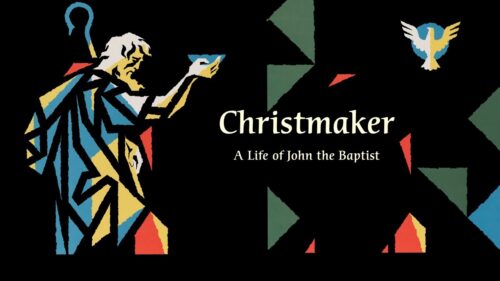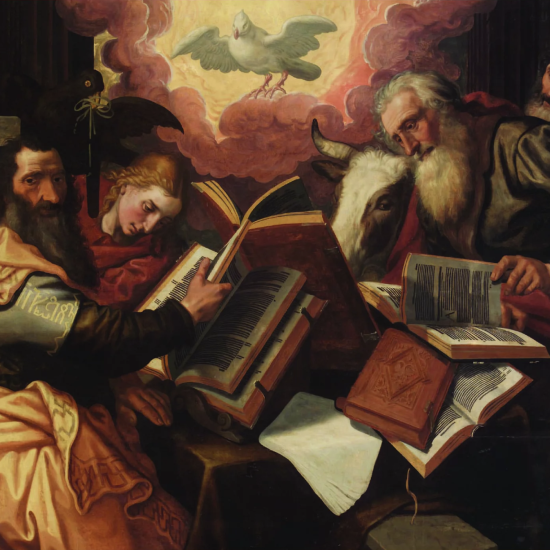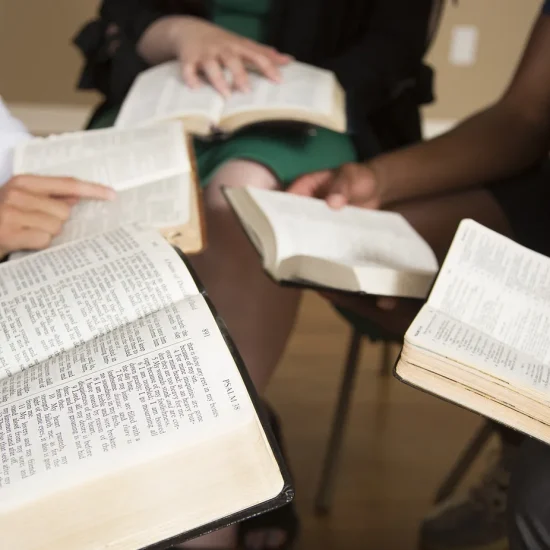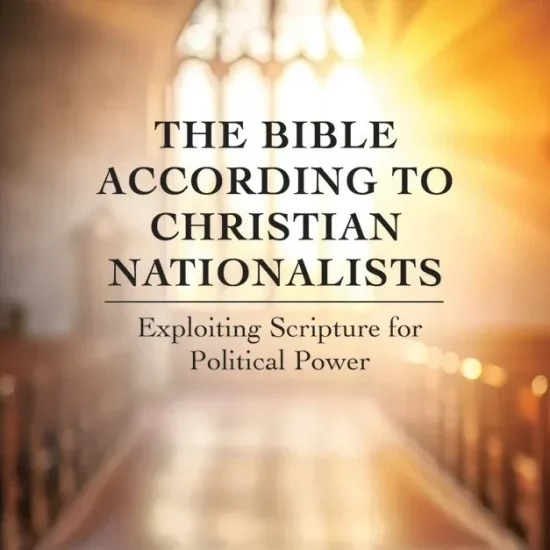

CHRISTMAKER: A Life of John the Baptist. By James F. McGrath. Grand Rapids, MI: Wm. B. Eerdmans Publishing Company, 2024. Ix + 172 pages.
Most Christians know the name of John the Baptist. He is a central character in the Advent story and appears again on Baptism of Jesus Sunday (the Sunday after Epiphany), along with several other references. He is eternally connected with Jesus, as a possible cousin, forerunner, and the one who baptizes Jesus. Many who know the name of John the Baptist, likely have imbibed a certain image of John. He’s probably dressed in animal skins (maybe the summer dress of a caveman). You might mistake him for the crazy guy with a sandwich board who yells at people on the street corner telling them to repent or they’ll go to hell. Then there’s his diet of locusts and wild honey. Then there’s the matter of his arrest and death on the orders of Herod Antipas, an execution that takes place after the daughter of his wife Herodias dances for him. We likely know certain parts of John’s story, but could there be more to the story? Might John be more than simply Jesus’s forerunner? In other words, could the conventional story of John the Baptist be off the mark?

Robert D. Cornwall
For inquiring minds who wish to know more of John’s story and whether we need a corrective, we are fortunate to have James McGrath’s book Christmaker: A Life of John the Baptist. McGrath offers this volume as an accessible introduction to the life of John the Baptist. He has also written a second, more academic version, titled John of History, Baptist of Faith: The Quest for the Historical Baptizer. McGrath points the reader to that volume for those wishing to dive deeper into the story of John the Baptist. I plan on offering a review of that more in-depth volume, but first I would like to introduce you to this volume.
Although I thought I knew the story of John the Baptist fairly well, in reading Christmaker, I discovered that there is much more to the story than I had imagined. The Gospels tell us that John served as the precursor or forerunner to the ministry of Jesus. He was called by God to prepare the way for Jesus, and therefore he would play a secondary role in the story. According to Luke, he was Jesus’s cousin. He is the one who baptizes Jesus, launching Jesus’s ministry, before finally getting arrested and executed on the orders of Herod Antipas. But what if Jesus started out as one of John’s followers and then took over leadership of that movement after John’s arrest and execution? Then there is the question of where John got his start, especially since, according to Luke, he was the son of a priest. Where did he get the idea of using baptism to call people to repentance with the offer of forgiveness? Was he a Nazarite? Was he an Essene? There are many questions that are left hanging by what is found in the Gospels, though Josephus fills in part of the story.
James McGrath teaches New Testament literature and language at Butler University and is the author of several books—both academic and popular. The most recent book, prior to Christmaker is The A to Z of the New Testament: Things Experts Know that Everyone Else Should Too, (Eerdmans, 2023). His interest in John the Baptist is not only rooted in his studies of the Gospels but also in his interest in the Mandean religious community, a community in which John the Baptist factors prominently. What makes his work on John the Baptist unique is his use of Mandean accounts to help us better understand John’s life and ministry. Thus, he draws the Gospel accounts, Mandean accounts, along with Josephus and other apocryphal accounts that speak of John’s life and ministry. He notes that “more of the legends (both early and late) contain at least a faint echo of the voice of the historical John than has hitherto been acknowledged. Some of what is familiar tells us much, much more about John than anyone has realized” (p. 8). While John has been overshadowed by Jesus, who is featured throughout this book, John is an important figure in his own right and deserves to have his story better understood. Since John and Jesus are deeply intertwined, if we are to truly know one, we should know the other.
In Christmaker, McGrath takes us from John’s origins as Zechariah’s “Rebellious Son” (Chapter 1) to his arrest and death (Chapter 5: The Last Days), along with a reflection on his impact (Chapter 6: “No One Is Greater than John”).
In Chapter 1, we encounter the one McGrath speaks of as being “A Rebellious Son.” The reason for this reference is that John was born to be a priest and yet he rejected that calling. McGrath suggests that Elizabeth’s decision to dedicate her son to God, likely making him a perpetual Nazarite, which would have involved his not cutting his hair, would have prevented him from becoming a priest like his father. So we encounter this figure who lives on the margins of society, dressing in rough clothing and eating locusts and honey. While he shared some aspects of the Essene vision, his views were different enough to make it unlikely that he was an Essene. While we often envision him being something of a hermit, if we pay attention we discover that John gathered around himself disciples who shared his vision. One of those persons might have been Jesus. Since rebels tend to attract rebels, he writes that “it should come as no surprise to discover that John’s most famous follower, Jesus of Nazareth, was accused of being a rebellious son as well” (p. 27). The two may have had different emphases, but they shared a common vision of their context and the Temple.
Jesus is known for preaching against the Temple, but according to McGrath he shared this view with John. Thus, the second chapter is titled “I Will Destroy This Temple.” Even as John rejected his father’s calling, he turned against the Temple, offering Baptism as an alternative. While immersion for purity was a common practice, John offered it as an alternative to the Temple sacrifices as a means of receiving forgiveness of sins. It served as an important challenge to the Temple system since John’s baptism was free and did not require travel to the Temple, while Temple sacrifices required money, even for the cheapest sacrifices. In doing this John also fulfilled his priestly calling. When it comes to whether John was connected to the Essenes, though there were similarities, including protests against the Temple leadership, the Essenes still held out hope of a restoration of the Temple leadership, while John completely repudiated the Temple. Thus, if Jesus was his follower, which I think McGrath has demonstrated here, then Jesus was not part of the Essene community either. Therefore, it is likely that what Jesus did was extend and expand John’s ministry.
Chapter 3, “The Lost Sheep of Israel,” speaks to John’s attempts to connect with an audience and to draw to himself followers. Again, we are reminded that John wasn’t the wild man we often envision, but rather a person who could draw people to himself. McGrath writes that “John was a passionate individual with a great boldness and directness, and at the same time, he was a teacher who gathered students, people who were impressed with what they heard him say and eager to learn more (Luke3:10-14; John 135; 3:25). Eventually, people flocked from far and wide to hear him, and the extent of his influence was remarkable” (p. 66-67). Among those who gathered around him most likely was Jesus. What we have is a movement of people who found the establishment less than helpful and sought a different way of being the people of Israel.
John is quoted as speaking of someone who would follow him. It is in Chapter 4, “Someone Is Coming,” that McGrath begins to develop more fully the relationship of John and Jesus. Thus, we have John’s role as the Christmaker. What is important to note here is that John most likely didn’t see himself being Jesus’s forerunner, even when he spoke of someone coming after him. He writes that “it is much more likely that John saw his prediction of a stronger one to emerge from his followers as an invitation rather than a reference to someone already identified” (p. 97). This isn’t how we usually read the Gospel accounts of John’s ministry, but it makes the most sense contextually. What McGrath does here, however, is show how John could have been perceived to be a messiah and a threat to the political establishment. He might have espoused nonviolence, but that doesn’t mean the authorities didn’t perceive him to be a threat. Thus, he was arrested and executed. What McGrath seeks to do as well is affirm the premise that John and Jesus were not at odds or rivals but had a similar goal—the establishment of God’s realm—even if they may have differed at certain points.
The story of John’s execution has long fascinated people, especially the suggestion that a drunken Herod Antipas was so taken by the dance of his wife’s daughter that he promised her half his kingdom. In many ways the Gospels let Antipas off easy, blaming the wife, but as McGrath demonstrates in Chapter 5, “The Last Days,” Antipas had every reason to have John executed. He also takes us deeper into the story, drawing on various sources including Josephus as well as the Gospels. He explores the possible locations of John’s imprisonment and execution, whether at one of the fortresses or at Antipas’ capital at Tiberius. McGrath also turns to Mandean sources along with legends of John’s life to show how John is later vindicated. The Mandeans, interestingly enough do not portray John dying a violent death, but rather “a celestial messenger comes to John and simply removes the garment of flesh and blood from him” (p. 134). The Mandeans also speak of John’s marriage and children, so once again, perhaps, John wasn’t a hermit after all!
The final chapter is titled “No One Is Greater than John.” That was Jesus’s assessment after John’s death, according to Matthew and Luke. This was a correct assessment as John’s influence is spread across the globe, as he factors prominently in Christianity, among the Mandeans, and Islam. McGrath shows how John factors into all of these movements. It should be noted that for the Mandeans, John is not a forerunner of Jesus, but in many ways, a rival, as Mandeans do not embrace Jesus. So, we have a different perspective on John.
This is not a lengthy book, so it should be very accessible to most readers who desire to know more about John’s life, ministry, and long-term influence. It is deeply rooted in scholarship, but McGrath knows how to communicate with a general audience. So, in the course of the book, he opens up areas that might require further exploration, which we assume will be dealt with in the lengthier academic volume that is forthcoming. While McGrath draws on biblical and historical sources, including apocryphal texts along with Mandean texts, he also places himself into the story. Throughout the book, he shares about his visits to important sites connected with John. Thus, we have a more personal encounter with John, as we can view him through McGrath’s eyes.
James McGrath uses the genre of biography in Christmaker to introduce readers to a fuller picture of John the Baptist. While I look forward to reading the more academic volume, which I assume will reveal more dimensions of John’s story, I believe that this volume, written for a more general audience is, in itself, an important contribution to better understanding the Christian story. John does prepare the way for Jesus, but perhaps not in the way we usually understand it. He makes a good case for viewing John not only as Jesus’s forerunner but Jesus’s teacher, who passes on the mantle to his most famous disciple, who then gathers up many of John’s disciples, and continues the movement — even as he innovates himself. What I can say, having read this volume, is that it is really good. It is definitely a must-read for anyone seeking to understand the connection between John and Jesus.
This review originally appeared on BobCornwall.com.
Robert D. Cornwall is an ordained minister in the Christian Church (Disciples of Christ). Now retired from his ministry at Central Woodward Christian Church (Disciples of Christ) of Troy, Michigan, he serves as Minister-at-Large in Troy. He holds a Ph.D. in Historical Theology from Fuller Theological Seminary and is the author of numerous books including his latest “Second Thoughts about the Second Coming: Understanding the End Times, Our Future, and Christian Hope” coauthored with Ronald J. Allen. His blog Ponderings on a Faith Journey can be found at www.bobcornwall.com.






